Bug out bags are prepper mainstays, our invaluable combination pantry, toolbox and gear locker when tough times call for desperate measures. If the time comes that you ever need to strap on your BOB and giddy up you can assume that things are dire indeed.
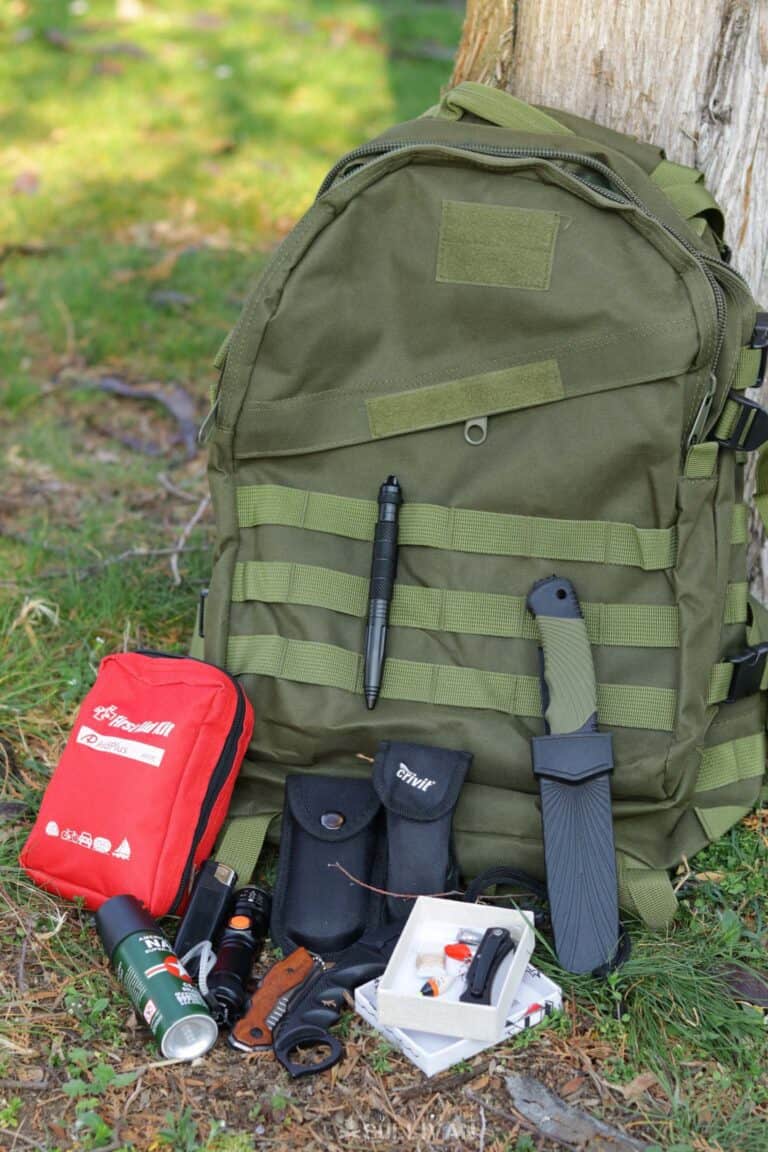
This is a big part of the reason why you’ll see so many forums, sites and articles (ahem) discussing and arguing about BOB contents, packing BOB’s, what kind of bag should serve as a BOB and more.
People naturally care very much about their choices of equipment, either from a desire to know they have the right tools for the job or a sincerely-held belief that their choices on gear are the best for whatever reason.
Naturally, this passion will often erupt into spirited debate on the internet and when both sources are reputable this can lead to considerable confusion from readers and onlookers as to what is “best” or superior.
What you don’t see so often is discussions of what you should not include in a BOB. While there is room and reason for almost anything you can think of in a BOB depending on the predicted threats and challenges you expect to face, there are some options that are poorly thought out or otherwise simply inferior to alternates.
As is so many times the case, the reductive method can be more illuminating than the constructive. Below is a list of items you should not include in your BOB along with my reasoning for the case and better alternatives.
Author’s Soapbox
As always, there will be some readers out there who will be able to refute any or all the items on this list for some reason, quoting a scenario or special circumstance that is plausible, if exceedingly unlikely.
If that describes you, drive on, but be honest with yourself if your exception is really a valid excuse, or just as souped-up justification for your pet piece of gear or other take-along.
If the latter is the case, fine. Nothing wrong with taking something along you’re absolutely not happy without, within reason. I often take a small hatchet everywhere in my go-bag with no concern for how unlikely I am to need it. I feel much more capable having it handy.
But you’ll notice I also do not go around advocating that everyone strap one of these things on to a small pack without justifying it.
Don’t let your love or admiration for any piece of gear as a concept, and its theoretical advantages, blind you to their very real flaws. These flaws are usually a pretty big one when it comes to a BOB: wasted space and weight. The latter being especially egregious.
That’s enough scolding. Let’s get to the list!
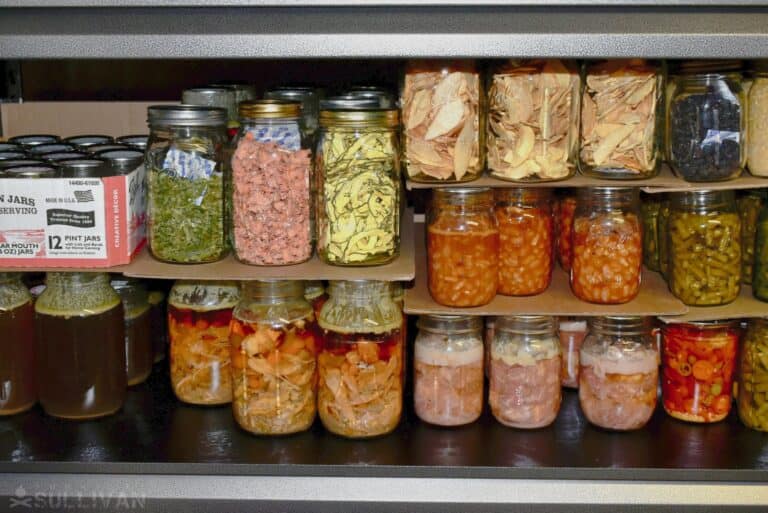
#1. Canned Food
Canned food is great if you don’t have to tote it. It is durable, stable, and the can makes a handy container for all kinds of little tasks when you are done. The problem with canned food is it is heavy and hard to pack efficiently. This makes it a poor choice for a BOB.
For my BOB, I rely on high-calorie, compact and space-saving staples like granola, meat bars, and energy gels, but there are a ton of BOB food options to choose from.
Remember, we are more concerned with calories needed for conspicuous exertion than long-term sustainment. And let’s get real; most folks have plenty of on-board calorie reserves around their middle and hindquarters to keep them operational for some time.
If you must pack something more substantial or your mindset suffers mightily from “menu fatigue”, then you should consider food packed in the foil pouches like MRE components or dehydrated meals in bags or thin containers (this saves even more weight if you have plentiful water along your route or in your area).
Ban the cans from your BOB, save perhaps one comfort dish like fruit cocktail (my favorite) or a can of Spam perhaps.
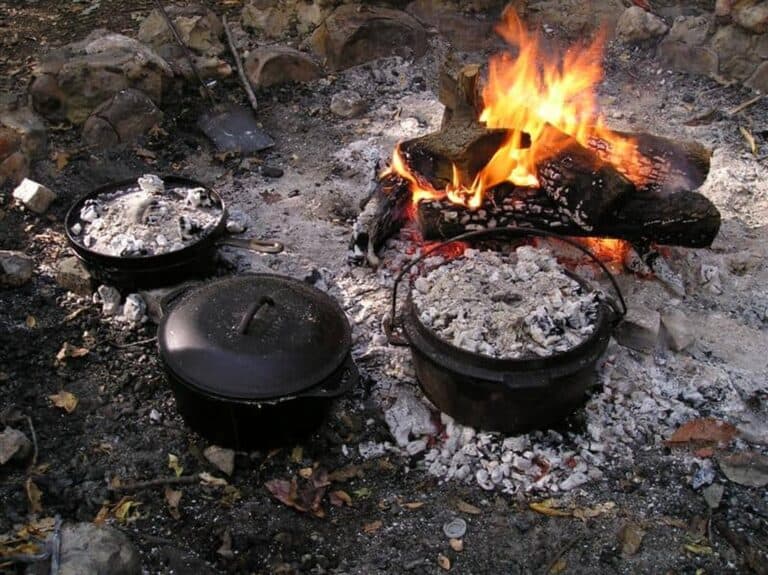
#2 . Heavy Cookware
Take no cook set with you that is not multipurpose and very small. For the love of God do not take cast iron anything! This camping staple may be fine for motorized forays and extended stays in deep country thanks to its multipurpose nature, but its gargantuan weight and noisy nature make them terrible choices for a BOB.
Also leave behind any tripods, stands, tongs and other niceties that are good to have around a happy camping cooking fire. You may need to camp, but you won’t be camping. Survival is rarely comfortable and never fun.
Instead, take a dual-use alloy set of a mug and bowl for your Jet-Boil and a lightweight set of metal utensils or even just a spork. A set that nests together will save even more space and is plenty for almost any culinary tasks.
#3. Multi-Burner Stoves
Continuing the cooking-related culls, ditch the multi-burner camp stovetops. The classic Coleman briefcase type is a common offender here owing to its ubiquitous nature and the fact that a great many people already have them. Wrong answer! They are far too heavy and bulky to warrant any consideration.
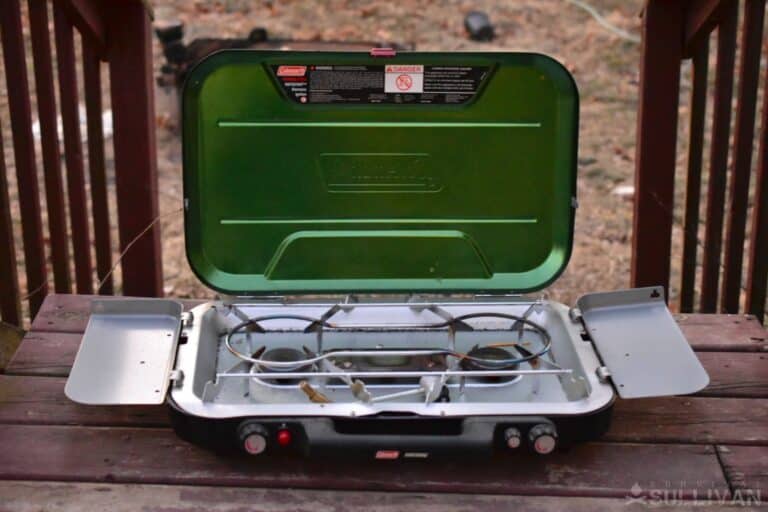
In addition to weight and bulk, most of these units are fuel hogs, and running multiple burners on small canisters of fuel will necessitate frequent changes, often incentivizing frequent users to, duh, just carry larger fuel canisters. This adds even more weight and bulk!
Ditch the ol’ jumbo stove here for any recent generation of lightweight, compact and efficient camping stove. These little minimalist wonders are tiny, reliable, efficient and most will boil a large mug or cup of water in 7 minutes flat. Righteous traits for such a small stove!
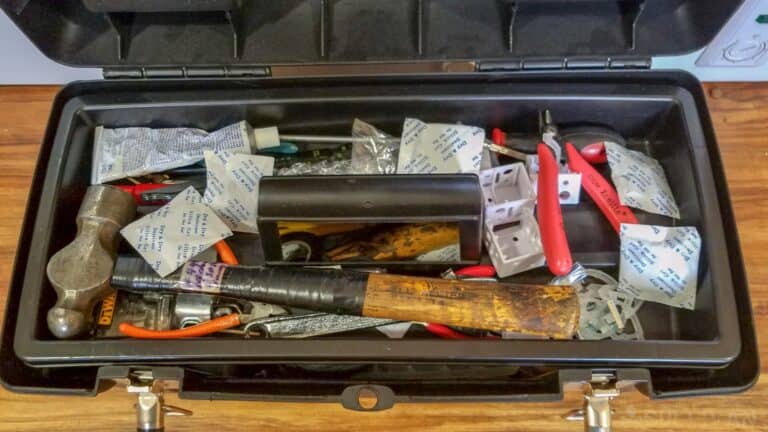
#4. Tools
Unless your bug-out plan is heavily vehicle-centric, leave the tool chest at home. I have talked with many preppers who are convinced that they will be using their skill with various machines and mechanisms to build their way into safety, fixing, fastening and hotwiring all manner of technology. Ok, take a breath and snap out of it.
Chances are you will not be working on anything so complicated as your private fantasies have in store.
You will not be rewiring the control board on the security system to allow you passage into the fuel storage facility where you then, thanks to your toolkit, re-arm the backup battery system allowing you to restart the generators and bring power back to a world gone dark!
No, you’ll be tightening fasteners on all kinds of gear, scraping and snipping things, and using pliers to pull cord or splinters. All you need is a multi-tool, good knife or two, folding saw (if in a wooded area) roll of duct tape, hank of cordage and, maybe, a set of vise-grips.
Leave all the rest of your tools at home or in the vehicle. No matter how handy you are.
#5. Excess Ammo
It’s so, so easy to go overboard on ammunition, especially when you are gun-centric like I am. Most people will toss 10 spare AR mags into their BOB without a second thought. That’s a lot of weight. But do you really need that capability?
I know we are all worried about the less savory elements in our society, especially when law and order disintegrates in the wake of a major-major crisis, but we must prudently weigh the possible risks against the tradeoffs.
A loaded 30 round AR magazine, specifically a PMAG, weighs a little over 1 lb. Ten loaded magazines, 300 rounds, is over 10 lbs.! Yeesh, that is a lot of weight to feed one rifle. Other magazines and cartridges weigh more, and will gobble up even more weight.
Even with loose cartridges there is not much in the way of weight savings. The primary ingredients in your average everyday metallic cartridge are brass and lead, both of which are not known for their airy lack of heft. Shotshells are big culprits here.
Bottom line: think long and hard before filling your pack up with ammo. Your BOB is supposed to get you someplace. Would a better solution be to cache more ammo at that “someplace?”
#6. Books
Books are extremely heavy for their size, and bulky. The temptation to stuff a survival guide (or two) in your BOB to shore up weaknesses in your knowledge bank is very strong. This is where you must exercise your will in pursuit of a better solution.
The pithiest solution to that is to, of course, tell you to “get good” and be more prepper: study more, practice more, etc. That does not really help if you are already behind the eight ball, and then there is the tiny fact that one lifetime is barely enough to master one discipline, let alone multiples.
A better solution is to, really, take a small tablet or your phone loaded with notes, eBooks, guides and more.
I know the Old Guard balks at a dependence on electronic anything, but the preponderance of lightweight and efficient backup and solar power supplies has made feeding commonly carried electronics in the field more viable than ever.
Combine that with a modern tablet’s durability, airy weight and immense capacity and you can tote a whole library with you.
If you must take a paper book, go for compact and light versions of common survival manuals and texts. The classic SAS survival manual is available in this format. Alternately allow yourself one trade-size paperback book: it can make for useful kindling and toilet paper in a pinch.
#7. Gas Mask
If you do not have a specific, plausible atmospheric or other breathable agent threat that would justify a gas mask, leave it out. The set of circumstances where a full gas mask is a better choice than a respirator for airborne particulate are few in comparison.
The most commonly cited reason, airborne chemical warfare or biological agent, does not pass muster most of the time. Many chemical agents will penetrate skin readily. They don’t have to be inhaled or it mucous membranes to begin their terrible effects.
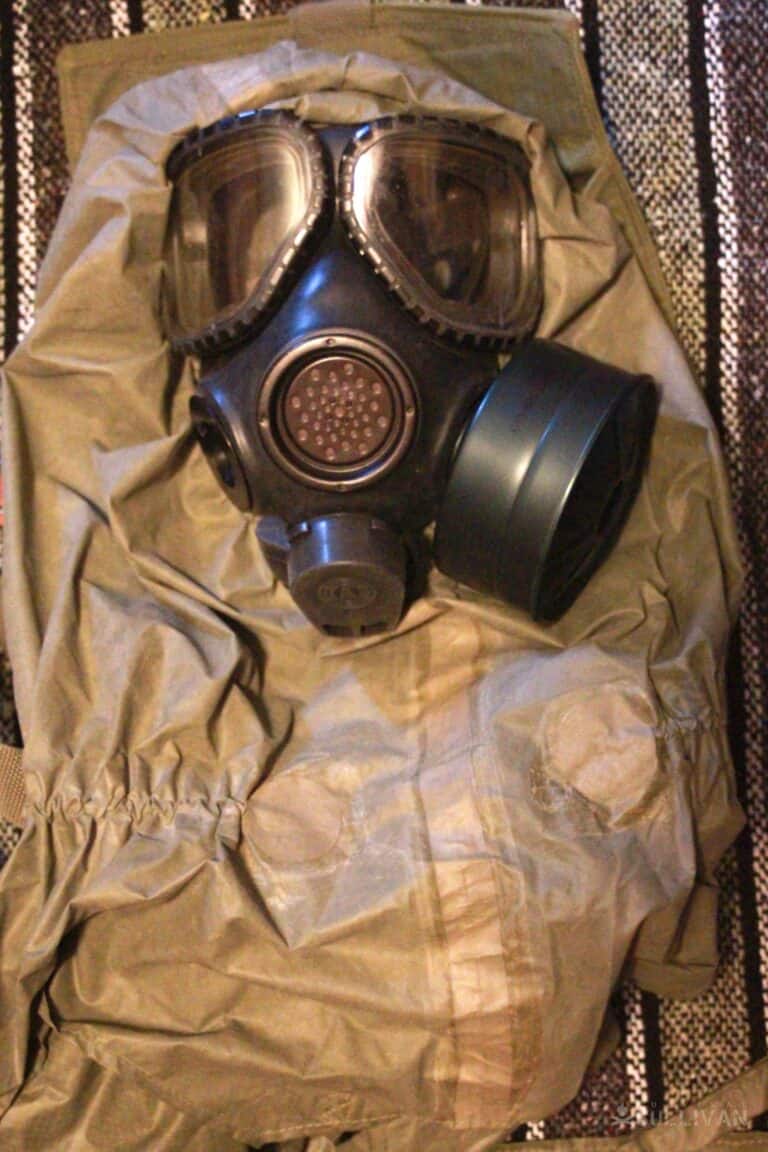
Gas masks will also go through filters with surprising regularity, so that’s another bulky, weighty thing you will have to carry to support the mask.
A respirator, even a disposable one, rated for airborne particulate will help dramatically if you have to move through any smoky or dusty area in the aftermath of an event, keeping your lungs clear (or clearer) from dust and grunge. A gas mask will do as good or better depending on its filter, but you probably will not need full face protection from most threats.
So if you aren’t going to tote and move in full CBRN gear, suit, booties, gloves and hood, then leave this bulky item behind.
#8. Excess Water
I saved this one for last because this is hardest for most people to swallow (zing!) considering no survival and self-sufficiency advocate worth their salt will ever undersell the importance of life-sustaining water in any environment. No complaint here.
The problem is that water is extremely heavy: a liter weighs a little over 2 lbs. A gallon weighs about 8 ½ lbs.
Yes, you’ll go through it fast, especially when you are working hard or moving fast. Yes, you absolutely must have it, and regularly. Yes, you should carry some. You just should not carry quite so much or else you are going to be in for a very, very hard road to march.
Just two 1-gallon containers of water will be tipping the scales at about 17 pounds. That may not sound like a lot for such a critical resource, but that is weight you can ill afford if you are moving any distance.
What you should be doing is finding and pre-selecting water sources along all of your bug-out routes to take advantage of using your handy-dandy water filter or purifying additives.
However you feel about such devices you had better learn to love them, otherwise you will be going nowhere fast carrying however much water you think you need. And the worst part is it still won’t be enough for anything but the shortest trips.
Get a good, compact water filter. Get a backup method of purification like chemical steri-tabs. Carry a super durable vessel to carry and treat found water. That’s it.
#9. Pajamas
Pajamas?! Who puts PJ’s in their BOB? Well, more people than you might think, as it turns out. While they do technically count as a change of clothes, PJs are too specialized to make any sense in a BOB loadout. You may very well decide to carry a change of clothing, but it should not be PJ’s.
Think about it: a set of clothes that are only good for sleeping in, aren’t good for working, hiking, or anything else, aren’t durable and have no other redeeming qualities. Hard pass.
It is worthwhile to add a spare set of clothes, even just duplicates you can sleep in or wear if your first set gets wet, filthy or whatever, but you need to justify the weight and space they take up by making sure they can do the job you need them to do. Leave the loungewear at home.
#10. CB Radio
I know I’ll catch some flak for this one. Unless you are moving to a BOL that is occupied by firendlies who are similarly equipped and trained on radio usage, ditch the bulky, heavy and power-hungry radio unless you are starting out in a situation where you will be expected.
Even if travelling with a party and wish to equip each member with a radio, it begs the question why you will be splitting up in the first place when bugging out? Bugging out is the time you should keep everyone close for safety, splitting up only when it is absolutely necessary and perhaps not even then. You should really have no other choice.
If you have to have self-contained communications tech in your BOB and don’t trust the cell networks to do that (a fair assumption) simply get a pair or more of high-quality walkie-talkies. Far lighter and good enough for LOS or just-around-the corner comms.
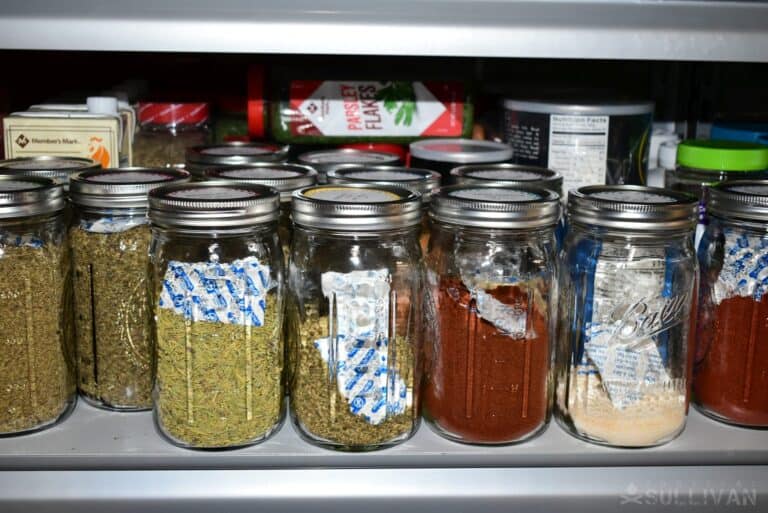
#11. Glass Containers
It seems some preppers have a predilection for mason jars and other handy lidded containers. This is fiine for canning and other miscellaneous organization, but such fragile containers should not be in your BOB.
While plenty sturdy for their intended around the house uses, Mason jars and other glass containers are far too prone to breaking when packed tightly into a BOB unless heavily padded. Heavy padding is a waste of useable space when you could have chosen a more durable container from the get-go.
Worse still, if you breaks without your knowledge and you shove your hand into your BOB to dig something out of it, you might wind up with a nasty laceration on a body part you are going to be using much in the near future.
Not an ideal way to start your journey. If you need a utility container for anything, make it shatterproof plastic or metal, not glass.
#12. Sandbags
Believe it or not, some people choose to carry sandbags for fortification purposes in their BOBs. The idea is sandbags are light and weigh almost nothing, and so a stack can be carried and filled with earth or sand when afield.
The execution makes sense, but the concept is terribly flawed: why in the world are you stopping to fortify your encampment area when you have somewhere to be or something you are trying to get away from, namely the thing that sent you bugging-out in the first place?
What’s more, you will be burning a ton of energy digging and filling sandbags, and many preppers underestimate just home many it takes to produce even a small wall to take cover behind.
This is a bad idea, period. You can certainly justify a tool like a hatchet or folding shovel for digging and building, but sandbags serve no other purpose except as a utility sack, and so should not be in your BOB.
Let’s Just Unpack These Today…
That’s it for my list of things you should definitely leave off your BOB packing list. All of these can be supplanted by better, lighter or more efficient options, and if you have any of them in your BOB they should be decommissioned without ado.
What do you think reader? Did I miss the mark one or all of them? Let us know down in the comments.
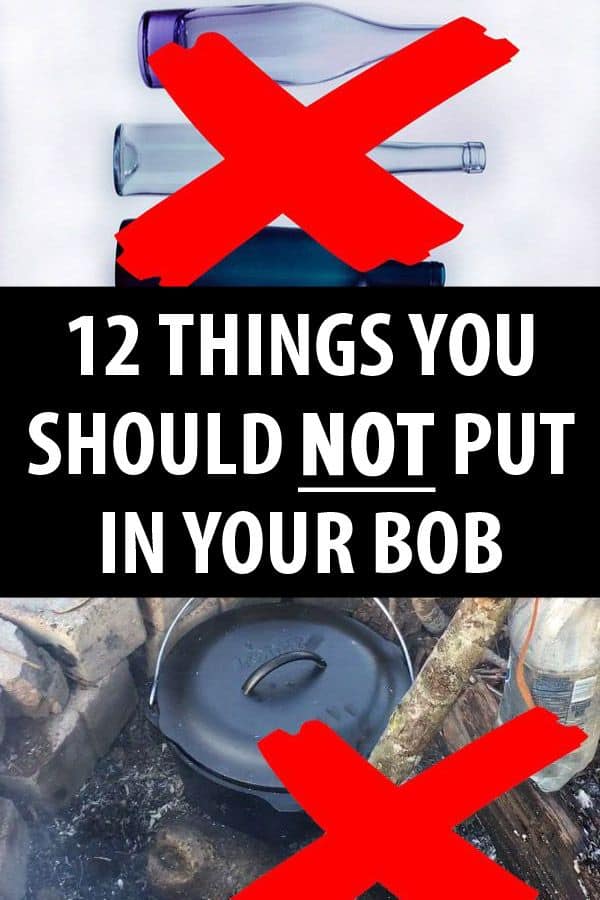

Charles Yor is an advocate of low-profile preparation, readiness as a virtue and avoiding trouble before it starts. He has enjoyed a long career in personal security implementation throughout the lower 48 of the United States.

I agree completely with your thoughts on what to leave out of your BOB, like you said there are hundreds of suggestions on what to pack, but little on what to leave out. What are your thoughts on the Zero water for filtration, I have a filtration straw, but it’s not practical for cooking needs, thanks you
I also agree completely. I don’t understand the PJ thing at all. I don’t have any type of cook set in my BOB/GHB. Instead, I carry two full MREs with heaters. I’m always going trough my bag and adjusting contents trying to get weight down or better function. It’s constantly evolving.
good list. i am 70 and have felt bad because i cant carry all the extra stuff anymore. this list makes me feel better about what i do have ready to go.
#10 – CB’s… No flack here.. If there is a real SHTF, we need to have a little faith in humanity. CB lines (40 Channels) will become the 21st century Party Lines (If you don’t know what a party line is – hint… It’s not about politics and you’re a snowflake) and will be used for local conversation. Great list my friend! Respectfully, The Break Away Hoemsteader.
One note about excess water – it depends on the climate. I (currently) live in the desert. Water sources are few and are mostly man-made. I cannot depend on finding water as I go, and in a bug-out scenario, any water will likely be watched and/or guarded.
With lows in the mid 90’s and highs above 110 in the summer, no water is a death sentence. Forget about rationing, you will be in trouble in hours if you cannot drink. A gallon a day is the minimum for me, if I’m sheltered during the day and exerting myself at night. When I put a new roof on my house in the summer, I went through 4 gallons of water a day (and 1-2 teaspoons of salt).
Adjust your BOB for the climate and the season. For myself, my BOB has a (plastic) jar of peanut butter and a plastic spoon for food. More room for water!
You are correct. In my area you are more likely to see flooding, and a water filter will not help with that heavy pollution. Thankfully not as hot, and likely more rainy, but if moving quickly in a flood you will need to carry.
We would also get fires. Maybe no gas mask but paper masks and goggles are needed if you don’t have a respirator. There is enough chemical that could burn to either get a respirator or avoid.
very good comments here, I have about the 2 liter limit in my bag…BUT I also have other containers, plastic bags, foldable containers so that when I do dig in somewhere new, I can filter and store more than I originally took with me and have enough to share if I meet another Prepper…Live free, GP
I bought pre-packaged bags for my vehicles. (Yes, I am that lazy LOL) They are good quality bags and turned out to be a good start on a get home bag. I TOTALLY agree that the quantity of water you can (or should) carry needs to be limited. The bag I bought had 5 bags of water in it (for 3 days? WHAT?)…however when you took the water OUT of the bag it decreased the weight by a full 25% (Possibly more). My current solution is to put a fanny pack (cuz that’s what I owned) in the bag and would move the water to the front of my body for the walk home. I had to add a water filter to the bag(s) so whomever needed to use it to get home would have access to clean water. (Live in the NE, so there is always plenty of water around. This year there has been way too much. LOL) Get a good filter and a couple of metal bottles. Presto, you are good for a while.
I would add MREs to the list of things that do not belong in a BOB. Most of the weight of canned goods is NOT the cans, but rather the contents. MREs are just canned goods without the can.
A Bug Out Bag is only intended to get you from a place lacking safety or supplies to a safer place with supplies. Perhaps from work to home or from your urban home to a a family member’s home outside the city. Under these circumstances, your objective is to move as quickly as possible, perhaps to get away from a threat or to get to your designated place of safety quickly to help secure it. So speed is the essential objective. This means minimal weight and minimal time taken for food preparation. The other important thing is to travel without attracting attention from those who would take what you have. And finally, to survive the weather.
So the ideal foods can be eaten while walking with no heading or cooking. The author mentions some of these. Perhaps a “space blanket”.
But forget even a small stove as well. Comfort is not the objective, speed is. In the time you spend cooking just one meal, you could walk another mile or two. And the smell of cooking and sound of a stove is an invitation to guests, and the need to find privacy yet another factor slowing you down.
Granted, you might want to include some very small and lightweight items that would give you a chance of survival if you are unable to execute your plan successfully. For example, matches, a few fishing hooks and line, a little paracord, and a knife. But most of the weight has to provide the food to survive a serious hike which might take longer than your plan.
Good tips and a great article. Even if you would never consider the above items due to common sense, it is a great reminder to be thinking and re-thinking what you really need and don’t need. My first BOB was ridiculously heavy. I, too, am constantly packing, unpacking and reconsidering this thing to narrow down to just the very basics: Water, shelter, protection and food.
Thanks for the article and replies!
So wait, you say it takes to long to cook a meal then you say to include fishing gear? Fishing could waste hours and still not produce any food. Fishing should only be considered for long term survival.
again, good thoughts, I do not have a problem with CERTAIN canned goods. The weight of them balances out when I don’t have to HYDRATE the DRIED foods. Weight is weight. Water or canned…Boiling water does not smell, that is right…But burning material does, they will always smell you and your fire.
Another thought, you can drink the water in the cans – corn, peas and such. The fat residues in a can of meat, oil from sardines, You can also drink water from tuna fish cans etc. and or used for flavor, or starting a fire(fat).
ON ALL BUGGING OUTERS: Do not worry so much about the weight! Practice/learn to carry more! But use your head. Remember how the Indians used a sled behind their pack horses? Put your stuff on two long poles and drag it. Shoulder straps like a backpack, shoulder weight is reduced to a minimum and your distance gets better with less weight, (a few twigs behind this contraption helps cover your tracks too, for those who feel the need). Live free, GP